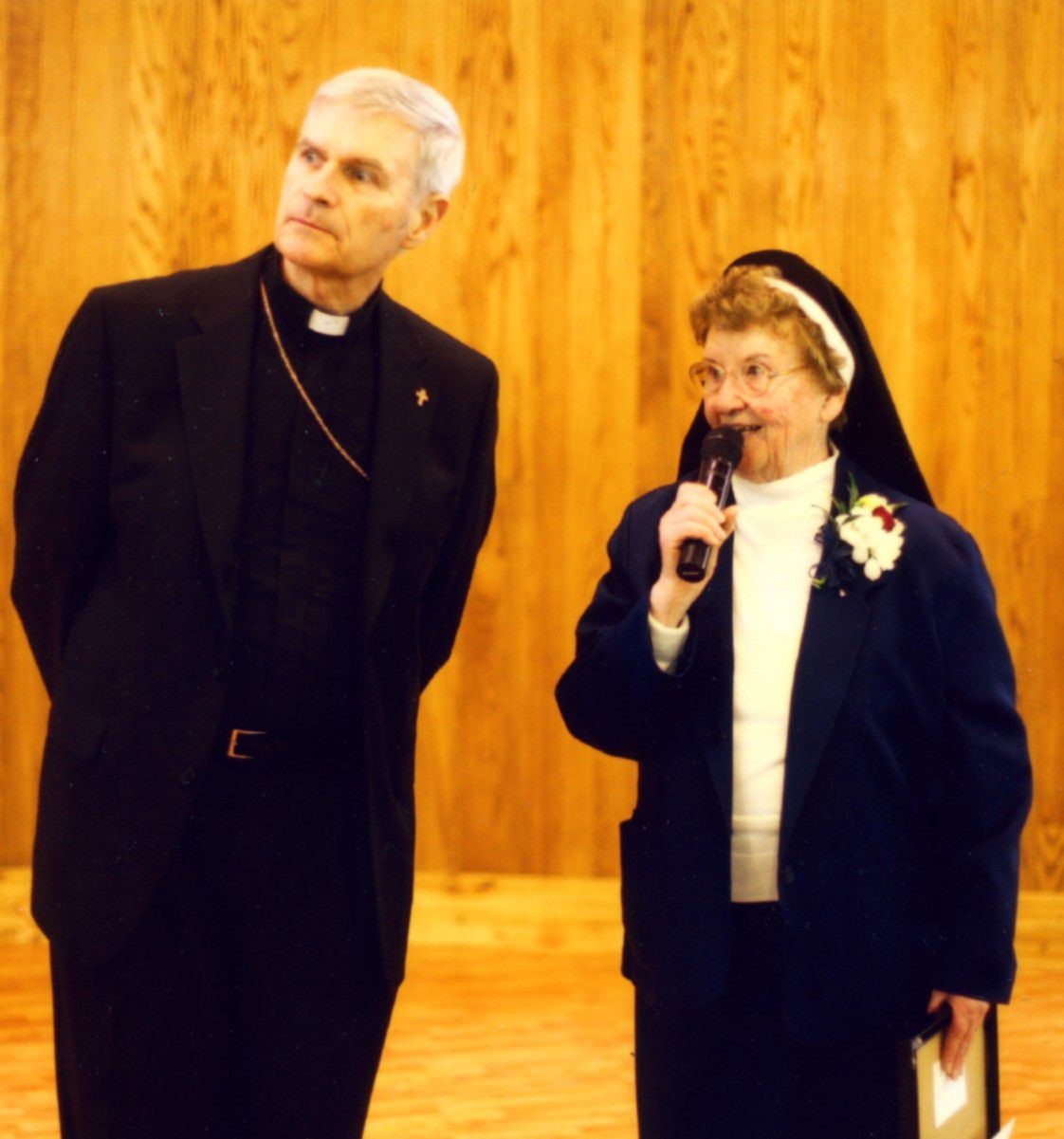By Deborah Herz
Sister Kathleen O’Hara turned 95 on June 23, but you’d never know it. She’s harder to catch than a fox in a henhouse.
This profile is one in a four-part series on Sisters of Mercy in Alaska.
See links after article.
Since retiring three years ago from her ministry in Anchorage, she’s lived at Mercy Convent in Albany, some 4,386 miles from the place she called home for 40 years. True to her motto, “Whatsoever you do for the least ones you do for Me,” Kathleen worked for four decades in Alaska—known as the last frontier—coordinating religious education, starting a family-life program and serving as parish administrator. Later she ministered in an assisted-living facility, coordinating a hospice-care program and supervising the construction of a chapel where residents could attend Mass.
Alaska’s state flower is the forget-me-not, and the people from Anchorage, where she also served as principal of St. Elizabeth Ann Seton School for four years, make sure Kathleen knows she is still dearly loved.
“They call me every week,” she says. “I hear from kids at school who are now grown up, teachers, families I helped and priests.”
Kathleen’s Alaska adventure started when she was in her late 20s, living in upstate New York’s North Creek. “The Reverend Mother sent out a letter asking for volunteers to help reopen a diocesan school in Anchorage,” she says. “I read it, didn’t pay much attention, and then went to the chapel to say prayers.”
The next day, the small still voice inside urged her to read the letter carefully.
“I decided to put my name on the list,” she says. “I replied to the letter then forgot about it. The next day I got a call from the Reverend Mother, who said, ‘Katie, you’re just the kind of person we’d like to send to Alaska.’”
Before making her final decision, Kathleen prayed and checked with her mother, who said, “Kay, you’ve always done whatever you’ve wanted. Why would I bother to try to stop you?”
That sealed the deal, along with the fact that Alaska is known for record snowfall. A few years earlier, Kathleen had fallen in love with skiing thanks to local North Creek parishioners, who outfitted her with complimentary lessons and equipment. “I would slip out of my habit and put on ski pants,” she recalls. “There was a feeling of freedom in skiing; it’s one of the most spiritual things I’ve ever done.”
Assigned to teach religious education in Anchorage’s cathedral, she wasn’t there long before the archbishop asked her for a favor. “He said, ‘I see that you were principal of St. Teresa of Avila School in Albany, and I need a principal for St. Elizabeth’s school.’ He gave me a whole half-day to make my decision, and I started the next day.”

On weekends, she and one other Sister of Mercy, the late Arlene Boyd, were assigned missionary work, teaching religious education to adults and teachers. “We went [300 miles] to Valdez, then [145 miles] to Cordova and then [92 miles] to the Kenai Peninsula,” she says. “Sometimes we drove and other times we took a ferry or a bus.”
Her mother even came to visit. “It worked out fine for her, too,” Kathleen says with a chuckle. “After 40 years, I guess it was the right decision after all.”
And just as a friendly reminder, the pre-K–8 school where she served still gets top grades from parents, who say they appreciate the hard work, leadership and compassion of the teachers and administrators, the legacy Kathleen left behind.
Looking back, Kathleen says the hardest part of her ministry was ending it. “Yes, life pales in comparison now,” she says. “I’d go back to Alaska tomorrow if I could to celebrate my 95th birthday.” [Note: This interview took place before Sister Kathleen’s 95th birthday.]
In the meantime, no grass grows under Kathleen’s feet, even though she reluctantly relies on a cane and a walker. “I just attended a St. Patty’s day party with a live band,” remarks the nonagenarian. “The dining room was so crowded there wasn’t any room to dance.”
Read more about Sisters of Mercy who ministered in Alaska:
Note: Portions of this article were excerpted from an article by Catherine Walsh, communications specialist, Sisters of Mercy, Northeast